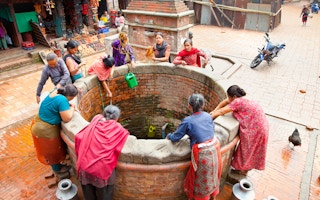NEW YORK – Since 2000, when the United Nations Millennium Development Goals (MDGs) were adopted, the global community has rightly focused significant attention on providing access to basic water and sanitation services. From 1990 to 2010, more than two billion people gained access to improved water sources. As the United Nations prepares to adopt so-called Sustainable Development Goals (SDGs) as the post-2015 successor to the MDGs, the high-stakes business of large-scale water infrastructure should be placed front and center.
To continue reading, subscribe to Eco‑Business.
There's something for everyone. We offer a range of subscription plans.
- Access our stories and receive our Insights Weekly newsletter with the free EB Member plan.
- Unlock unlimited access to our content and archive with EB Circle.
- Publish your content with EB Premium.
The conventional wisdom has been that improved access to water depends on digging wells, adopting community-based solutions, and focusing aid programs on reaching more people. But these important measures are only one part of a much larger – and more capital-intensive – strategy.
According to a recent report by UNICEF and the World Health Organization on their joint monitoring program for water supply and sanitation, more than 1.2 billion of those who gained access to water from 1990 to 2008 had it piped to their premises. This number dwarfs the impact of the “small-scale” sources – from dug wells to rainwater harvesting – that many believe have done the most to solve the problem.
In fact, the number of those who gained access to water was higher in the decade preceding adoption of the MDGs. India and China accounted for the vast majority of those gains, as both countries enjoyed rapid economic growth in the 1990’s and were able to lift large numbers of people out of poverty.
“
The first step should be ensuring that the natural infrastructure – the rivers, aquifers, and wetlands that determine the quantity, reliability, and quality of our water – can continue to function. In many cases, this is by far the most cost-effective option to ensure long-term water sustainability
As these examples suggest, countries have been most successful at delivering water services when they can rely on their own economic growth to bridge the gap in water-infrastructure costs. But the gap is widening. The 2013 World Economic Forum Global Risks report identified “water supply crises” as the biggest “societal risk” to global prosperity. According to some estimates, meeting the needs of a growing global economy will require the world to begin devoting at least $1 trillion annually to water infrastructure within the next 20 years – roughly double the level of annual spending today.
Addressing this development challenge will require new thinking, innovation, and action in areas such as sustainable hydropower, efficient agriculture, and access to safe drinking water for cities. The first step should be ensuring that the natural infrastructure – the rivers, aquifers, and wetlands that determine the quantity, reliability, and quality of our water – can continue to function. In many cases, this is by far the most cost-effective option to ensure long-term water sustainability.
Several countries around the world – from Colombia and Mexico to China and the United States – have begun investing along these lines. They are showing that we can improve outcomes by planning our engineered infrastructure in a way that is compatible with the survival and health of river basins and watersheds.
Of course, even if only 10 per cent of total investment in water resources were committed to cost-effective natural infrastructure – the same proportion that, for example, New York City devotes to protecting its own natural infrastructure, the reservoirs of the Catskills – we would still need to find about $100 billion per year.
Mobilizing capital at that scale requires allocating the right risks to the right investors. Not surprisingly, the capital available for investments with a limited track record, uncertain future cash flows, and untested regulatory frameworks is extremely scarce. The key to scaling up investment in natural infrastructure will be to ensure that at every successive stage of growth, there is a sufficient amount of capital available to support the risks involved. Achieving this goal will require the right blend of public, private, and philanthropic capital.
Public-sector capital has traditionally been the “risk taker of last resort,” underwriting large-scale projects and paying for much of the existing water infrastructure. But, given credit constraints, many public institutions will be unable to underwrite the development and deployment of new solutions, particularly those that need to establish their track record at scale without a guaranteed revenue source.
Private capital – particularly the large amounts of private savings stored in middle-income countries – could, in principle, single-handedly underwrite new combinations of natural and engineered infrastructure solutions. But private capital would face significant opportunity costs, and investors are unlikely to opt for vehicles with which they have limited experience.
That leaves philanthropic capital – whether from private or public sources – as a key component of early-stage investment. Philanthropy has an important role to play in bearing the risks involved while natural-infrastructure solutions establish the track record needed to tap larger sources of public and private capital.
While small-scale solutions, such as dug wells, will remain an important part of efforts to ensure water security, a truly sustainable water-management path – particularly in the fast-developing countries of Latin America, Asia, and Africa – will require hundreds of billions of dollars in infrastructure investment. The process of formulating the SDGs offers an ideal opportunity to begin describing such a path.
Giulio Boccaletti is Managing Director for Global Water at The Nature Conservancy. This post originally appeared here.








